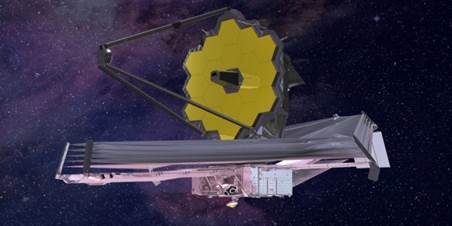





Disclaimer: Copyright infringement not intended.
Context
|
Stephan's Quintet is a visual grouping of five galaxies of which four form the first compact galaxy group ever discovered.[2] The group, visible in the constellation Pegasus, was discovered by Édouard Stephan in 1877 at the Marseille Observatory. |
About James Webb Telescope
Note
To know more about Lagrange Points visit: https://www.iasgyan.in/blogs/types-of-orbits-explained











© 2025 iasgyan. All right reserved